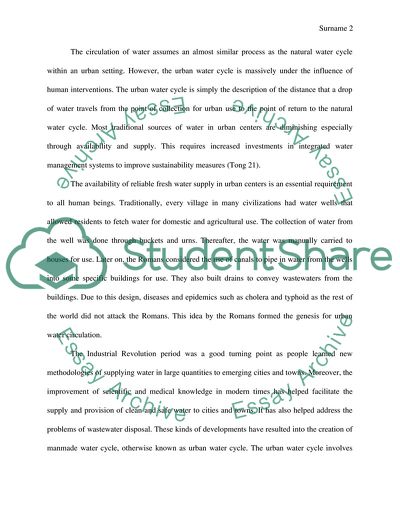Cite this document
(“Urban Water Cycle Essay Example | Topics and Well Written Essays - 1250 words - 1”, n.d.)
Urban Water Cycle Essay Example | Topics and Well Written Essays - 1250 words - 1. Retrieved from https://studentshare.org/environmental-studies/1609110-water-cycle-and-urban-water-cycle
Urban Water Cycle Essay Example | Topics and Well Written Essays - 1250 words - 1. Retrieved from https://studentshare.org/environmental-studies/1609110-water-cycle-and-urban-water-cycle
(Urban Water Cycle Essay Example | Topics and Well Written Essays - 1250 Words - 1)
Urban Water Cycle Essay Example | Topics and Well Written Essays - 1250 Words - 1. https://studentshare.org/environmental-studies/1609110-water-cycle-and-urban-water-cycle.
Urban Water Cycle Essay Example | Topics and Well Written Essays - 1250 Words - 1. https://studentshare.org/environmental-studies/1609110-water-cycle-and-urban-water-cycle.
“Urban Water Cycle Essay Example | Topics and Well Written Essays - 1250 Words - 1”, n.d. https://studentshare.org/environmental-studies/1609110-water-cycle-and-urban-water-cycle.


